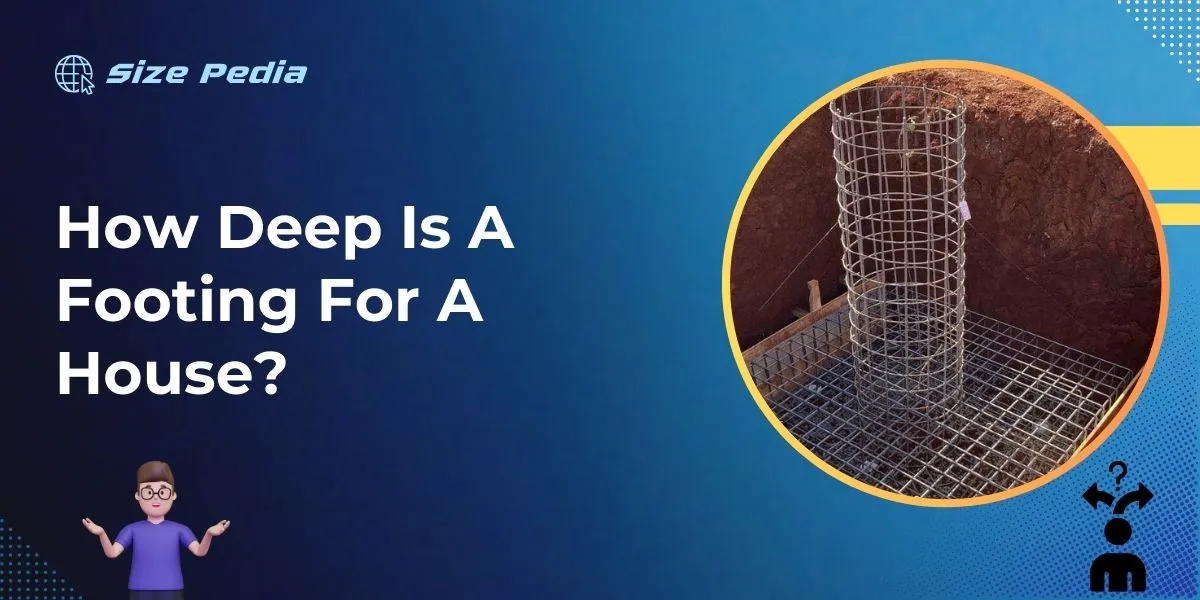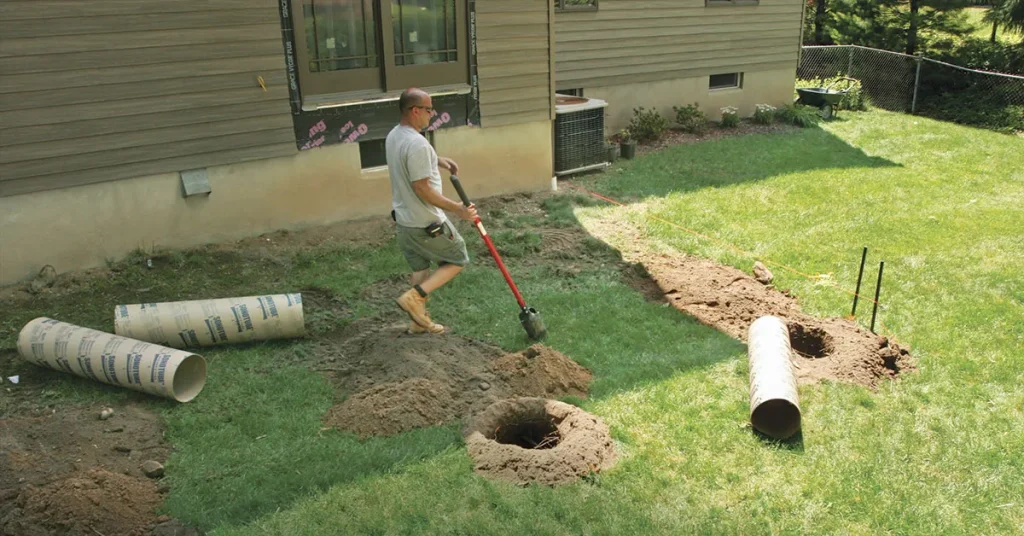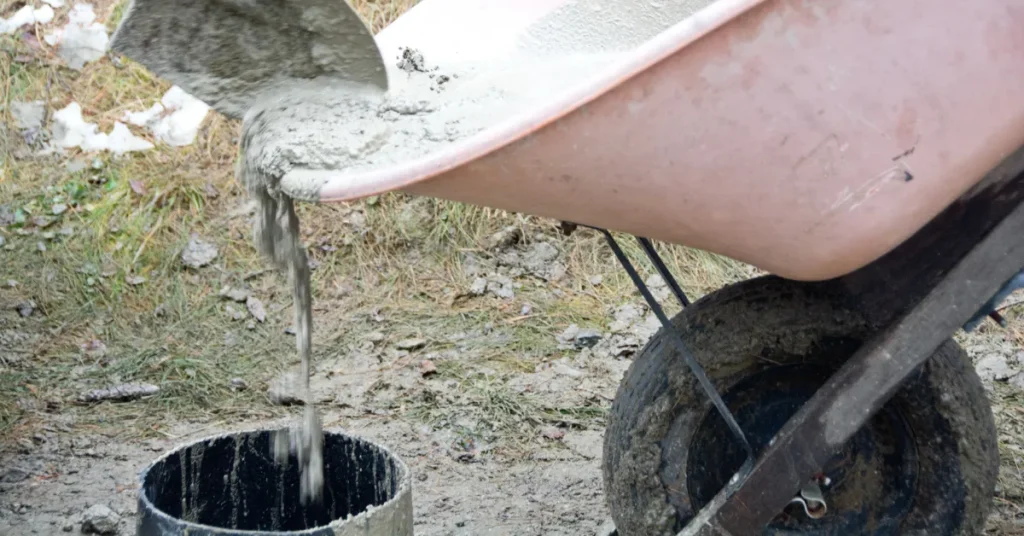Deck footings should extend below the frost line to prevent shifting during freeze-thaw cycles. Typically, this is at least 12 inches below undisturbed soil.
Creating a stable and lasting deck requires solid foundations, and the depth of your deck footings is a critical factor to consider.
The frost line—where the ground begins to freeze in winter—dictates the minimum depth for these footings to ensure they remain unaffected by weather-induced soil movement.
Local building codes often specify the necessary depth, which can vary depending on the geographic location. Deck footings not only provide a firm base but also help in distributing the weight of the deck evenly, thus preventing any sinking or structural instability over time.
A well-constructed deck with properly installed footings will enhance outdoor living space and can increase property value, making adherence to building regulations and guidelines essential for any deck project.

The Significance Of Proper Deck Footing Depth
Building a deck is an exciting project. Yet, its foundation holds the key to its durability. The correct depth of deck footings is crucial for a stable structure. Depths vary based on climate and soil conditions. Let’s explore why getting the depth right is so important.
Safety First: Why Depth Matters
Safety is the top priority in deck construction. Footings support weight and resist weather. Incorrect footing can lead to collapse:
- Frost line consideration prevents heaving.
- Deeper footings distribute weight more evenly.
- Secure footings mean a safer deck for everyone.
Longevity And Stability Of Your Deck
A deck is an investment. Proper footing depth ensures it lasts:
- Avoids soil movement which can weaken the structure.
- Reduces sway and movement in high winds.
- Promotes durability in changing weather conditions.
Factors Influencing Footing Depth Requirements

Understanding the depth requirements for deck footings is crucial for a sturdy, long-lasting construction. Factors such as local regulations, climate, and soil conditions determine how deep your footings should be.
Local Building Codes And Regulations
Your local building codes are the starting point for determining deck footing depths. These regulations ensure your deck’s structure is safe and durable. Always check with your local building department before starting your project.
- Permit requirements: Some areas require a construction permit. Knowing this informs the depth and specifications for your footings.
- Code specifics: These can vary greatly from one region to another and must be followed precisely.
- Inspection processes: Be prepared for potential inspections to verify compliance with local building codes.
Climate Concerns: Frost Lines And Soil Types
The depth of your deck footings is greatly affected by climate conditions. Frost lines and soil types play significant roles in this decision.
| Frost Line Considerations | Soil Type Considerations |
| Footing must extend below the frost line to prevent shifting during freeze-thaw cycles.Colder regions have deeper frost lines, requiring deeper footings. | Different soils bear loads differently, impacting footing size and depth.Looser soils might require wider or deeper footings for stability. |
Consult a local expert to identify your frost line. Testing your soil type helps determine the necessary specifications for your deck footings.
Typical Depth Guidelines For Deck Footings
When it comes to building a sturdy and safe deck, one critical factor is how deep to set the footings.
The depth of deck footings is key to a foundation that resists frost heave and supports the deck’s weight. Let’s dig into the typical guidelines for deck footing depths.
Standard Depth Measurements
Deck footings need to reach depths below the frost line to ensure stability. This frost line varies by region, but here are some common depth measurements:
- Northern climates: At least 48 inches
- Milder regions: Sometimes less than 48 inches
- Warmer zones: Often 12 inches or to undisturbed soil
Local building codes provide specific depths for your area. Always check these before you start digging.
Adjusting For Deck Size And Load
Consider deck size and load for optimal footing depths:
| Deck Size | Load | Suggested Depth |
| Small, Light-Use | Less Foot Traffic | May require less depth |
| Large, Heavy-Use | More Furniture, Frequent Use | May need to exceed standard depth measurements |
Deck load factors such as hot tubs or large gatherings call for deeper, thicker, and wider footings. Adjust accordingly for safety and function.
Digging Deeper: Advanced Considerations

Exploring advanced considerations in deck footing depths goes beyond just following minimum code requirements. It’s about understanding your deck’s unique needs. Specific factors can influence how deep your footings should go.
Elevated Decks And Additional Support
Building an elevated deck presents a challenge. A higher structure requires deeper footings for stability. It’s not just about height either. An elevated deck has more exposure to wind. It may sway if not properly anchored.
- Check local codes for height and depth ratios.
- Increased height demands thicker footings to resist sinking.
- Secure railings and add braces with deep anchor points.
Terrain Challenges: Hills, Slopes, And More
Tricky terrain alters footing depth rules. Hills and slopes can cause water runoff and soil shift, which threatens deck stability. Careful planning and specific techniques can turn these challenges into triumphs.
| Terrain Type | Consideration | Recommended Action |
| Hills | Uneven load distribution | Stagger footing depths |
| Slopes | Erosion potential | Use ground anchors and terracing |
| Soft Soil | Poor load-bearing capacity | Increase footing width or use pilings |
Consult a geotechnical engineer for analysis on complex terrains. This will ensure your deck stands firm year-round.
Ensuring Proper Installation Of Footings
Properly installed footings are critical for the stability and longevity of a deck. Footings must sink below the frost line to prevent shifting during freeze-thaw cycles. The depth varies by region due to climate variations.
Local building codes provide specific requirements. Always check these before starting your project.
Professional Vs. Diy Footing Projects
Choosing between a professional and a DIY approach depends on your skill level, budget, and the complexity of the project.
- Professional installation ensures expertise, proper depth, and adherence to codes.
- DIY projects can be cost-effective. They require tools, knowledge, and time.
Consider a professional for complex designs or when in doubt. Basic decks might be a good DIY start.
Maintenance And Inspection Tips
Regular maintenance is essential for decking safety and durability. Follow these tips for upkeep:
- Inspect footings annually for signs of movement or deterioration.
- Check for cracks or rot, especially after extreme weather.
- Ensure surrounding soil is stable and has not washed away.
- Look for changes in the level or alignment of the deck structure.
Address issues promptly to prevent further damage. This can extend the life of your deck.
FAQs About How Deep Should Deck Footings Be
How Deep Must Deck Footings Typically Be?
Deck footings should typically be dug to a minimum depth of 12 inches below the frost line for your specific region. This prevents shifting due to freeze and thaw cycles.
Can Deck Footings Vary By Climate?
Yes, deck footings can vary by climate. In colder regions, footings must extend below the frost line to prevent movement, while in warmer, stable climates, shallower footings may be sufficient.
What Determines Deck Footing Depth?
Deck footing depth is determined by the frost line, soil type, and load requirements of the deck. Local building codes often dictate the minimum depth to ensure stability.
Is There A Standard Width For Deck Footings?
Yes, there is a standard width for deck footings. Footings typically range from 12 to 18 inches in diameter but can vary based on the deck size and load.
Conclusion
Depth matters for deck footings to ensure stability and safety. Always abide by local building codes and consider the frost line and soil type.
Proper depth can prevent deck movement and enhance longevity. As we’ve discussed, don’t skimp on this critical step—your deck’s future depends on it!
Resources:
1.https://www.montgomerycountymd.gov/DPS/Resources/Files/RCI/MCResidentialDeckDetails.pdf
